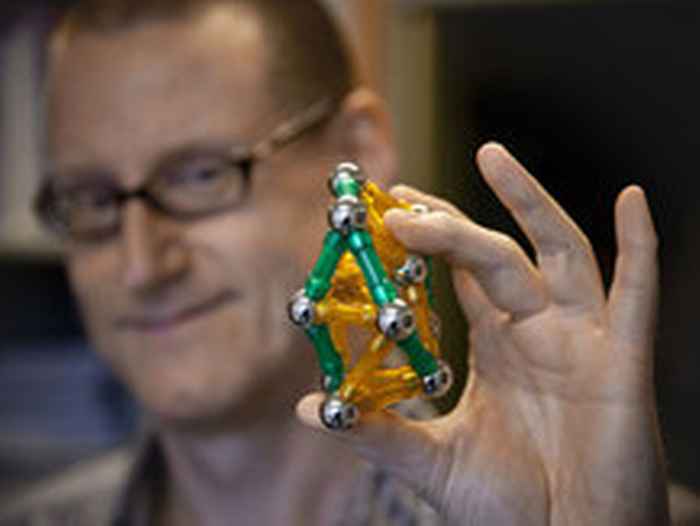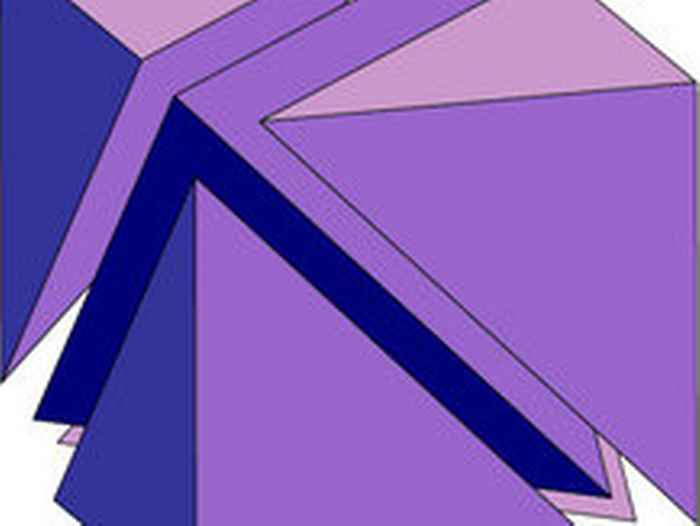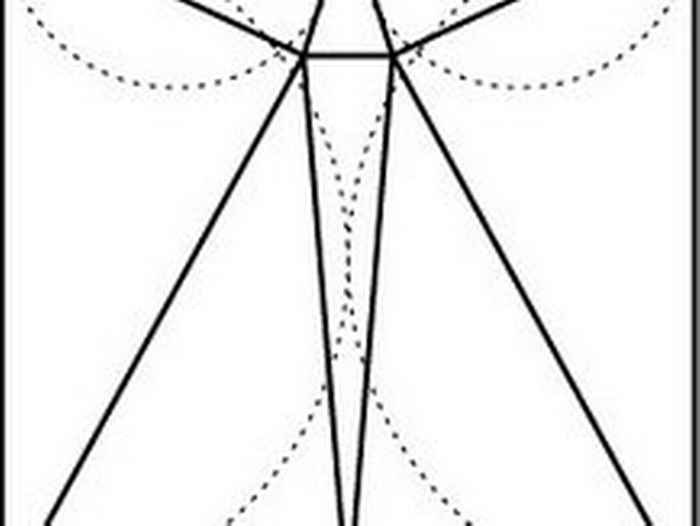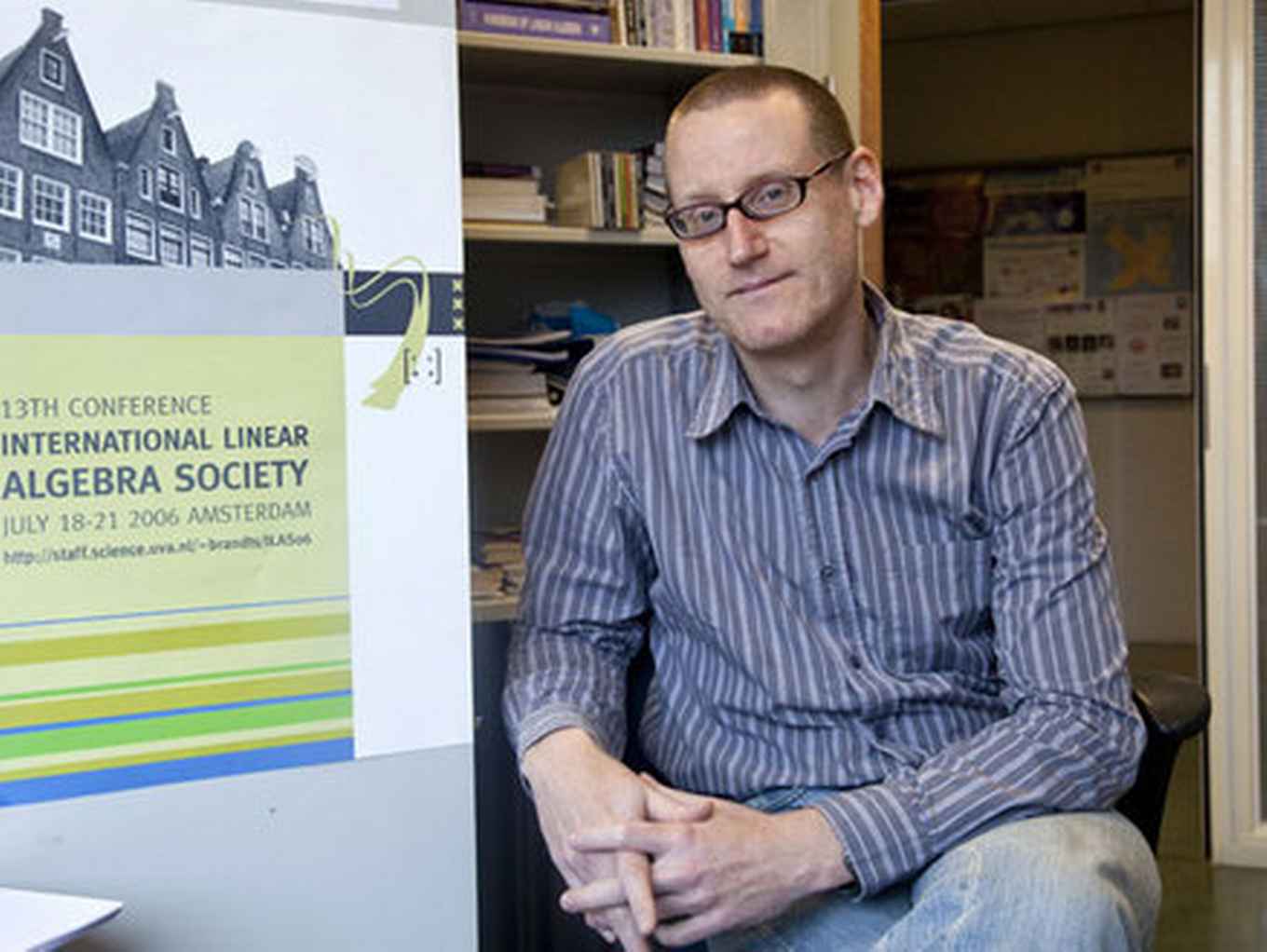Focus on research: mathematician Jan Brandts
Mathematics is regarded by many as abstract, incomprehensible and difficult, a judgment that University of Amsterdam (UvA) mathematician Jan Brandts is working hard to dispel. He provides lectures and web classes for secondary school students, refresher courses for teachers and, where possible, lectures before a wide public. His goal is to communicate the fun and benefit of mathematics to others.
‘If at a birthday party you say that you're a mathematician, people really don't even want to know exactly what you do', says Jan Brandts. However, he does admit that it is not an easy job to sum up in a few words. Only a handful of people understand exactly what it is he does.
Brandts is a researcher at the Korteweg de Vries Institute for Mathematics, and works on numerical analysis. ‘For problems which you know have a solution, but which you cannot calculate exactly, numerical analysis is used to try to at least get as close as possible to the solution', explains Brandts. ‘The trick is to approximate the solution and then also to prove that the approximation lies within a guaranteed range of the actual solution'.

Differential equations
The actual solution is often the solution to a differential equation. Differentiation goes just like we probably all still remember from secondary school - you have a function, and try to find the derivative. The derivative often represents a change in a given variable: velocity is the derivative of location, and acceleration is the derivative of velocity, for example. A differential equation describes the relationship between a function and its derivatives. ‘The equations that we deal with are often quite difficult, or impossible to generate exact solutions for. So we have to come up with clever tricks to find functions that, although they are not exact solutions to the differential equation, are almost indistinguishable from the real solution. And we also want to be able to quantify that particular "almost" - to me, that's the most important thing.'
Solving differential equations has all sorts of applications, such as in understanding the laws of physics, industrial processes, weather predictions and financial mathematics. ‘Concrete applications, such as calculating the ideal curvature of an aeroplane wing, require the simultaneous calculation of millions or even billions of numbers.' Of course, computers are used to perform as many of these calculations as possible. ‘Often the most difficult aspect is to think of how computers should perform the calculations. People have known for a hundred years how solutions to many problems could be calculated in principle. But if you actually have a computer perform those calculations, it turns out that you need a year to calculate the weather for tomorrow! Of course that's no help, so we need to think of smarter mathematical methods that are faster than the existing ones. And that presents both large and interesting challenges.'

An aeroplane wing of tetrahedra
Tetrahedra
In producing a solution, a numerical analyst must go through various steps. ‘First you need to model reality, using differential equations for example. The approach to this solution results in linear algebra: equations with matrices and vectors. You solve these and convert them into concrete figures, preferably as fast as possible.' Brandts explores all facets of the research field, and (among other things) is currently working on describing geometry using linear algebra. ‘To describe the forces acting on an aeroplane wing, you first need a mathematical approximation of the wing's shape. On a flat surface you often use a matrix of triangles, and in three-dimensional space you use tetrahedra - solid figures that have a triangle as the base and a single vertex above. To each of the tetrahedron's four vertices belongs a number that approximates the actual solution at that point on the wing.'
Viewing solid objects as combinations of tetrahedra is known as ‘triangulation' or ‘meshing'. ‘You stick tetrahedra together in such a way that the shape resembles the object you wish to model.' Sometimes this is simple: suppose you wish to calculate the temperature distribution in a sauna. Because of its square shape, a sauna is not difficult to divide into tetrahedra. But if you have a more complicated space in which you wish to solve certain equations, such as the interior of a car to see how sound waves from the speakers are reflected, the problem becomes much more difficult. Varying the shape and size of the tetrahedra helps to fill the space as effectively as possible. ‘Errors that you ultimately make in your calculations turn out to be dependent not only on the size, but also on the shape of the tetrahedra. And of course on how well you can fill the space.'
Why not just use cubes to try to fill the space? ‘You're right, it is much easier to stick square blocks together, and there are people who do that. But cubes are less flexible, and approximating round shapes becomes tricky.' Brandts draws two circles and tries to fill them, which indeed works much better with triangles. ‘Personally I look to tetrahedra in three-dimensional space because they have four vertices, the values of which determine a linear function precisely.'
‘To me, tetrahedra are also more beautiful as mathematical objects, they appeal to me more. Lots of really fun pure mathematical questions also arise around tetrahedra.' With a mischievous look, Brandts continues, ‘Although as a numerical analyst I am concerned with the practical applicability of mathematics, I do often find the pure mathematical questions more fun and interesting to think about'.

A puzzle
Filling an object with tetrahedra.
Brandts proposes a task. How can you divide a square into two triangles? Easy, just draw a diagonal line. But is it also possible to divide a square into triangles that only have acute angles (i.e. angles smaller than 90 degrees)? While this may sound like just a fun puzzle, Brandts explains that these types of questions are vital to producing proofs in numerical analysis. ‘If I want to solve a differential equation in a square domain, I can prove that if I want the numerical solution to have certain properties I am only allowed to use acute-angled triangles. By using acute-angled triangles, I ensure that certain physical properties of the differential equation will be retained in the numerical approximation.'
It is possible to fill a square with acute-angled triangles. Brandts reveals that you need at least eight, that it is also possible with 10 but that it is impossible with nine triangles. But flat surfaces are no match for Brandts - working in three dimensions is a completely different ball game. ‘This may surprise you, but nobody knows if it is possible to divide a cube into tetrahedra whose faces only contain acute angles. It has already been proven that if it is possible, many, many tetrahedra are required, but whether it really is possible remains unknown. I suspect that it is impossible, and am trying to prove it.'
Reverse stage-fright
As well as conducting research and giving lectures, Brandts also enjoys explaining things to large groups of people. He gives a range of lectures to secondary-school students and teachers, and every now and then lectures to the general public. ‘It's a kind of reverse stage-fright, I enjoy standing before an audience. I think it's fun to try to compel people to listen to me, it's wonderful when the whole room tries to follow what I'm saying with bated breath. It's a challenge to really try to explain a difficult mathematical concept, despite people being a little apprehensive. But I've noticed that if you tell a few white lies, it is easier to get people to understand.'
Brandts finds it hard to describe where his love of the spotlight comes from. ‘Mathematics is a lonely profession. You sit at your desk, and occasionally go abroad to discuss research with other mathematicians. Of course my colleagues at the institute participate in research, but that's totally different - I really don't understand exactly what it is they're doing. It's like comparing Russian to Chinese! Perhaps giving presentations counteracts that in some ways, that I am trying to fulfil that need for attention.'

In addition to giving presentations, Brandts is also active online. He runs a web class for pre-university (VWO) students in their final two years. The class lasts four weeks, averaging three hours a week, with students studying online material and completing assignments which they hand in digitally via Blackboard. Online forums allow them to meet other participants and discuss the material. 'They become acquainted with a kind of mathematics different to what are used to at school.'
The web class seems to be a success - last year there were 70 registrations, half of which actually completed all of the assignments. It also resulted in Brandts supervising two subject cluster assignments. 'Of course, our ultimate goal is to increase enrolments, which we achieve by appealing to individual students who are interested in mathematics. You think maths is fun, but your friends at school think it's idiotic. I used to be one of those idiots too', laughs Brandts. ‘Students who genuinely enjoy mathematics can now find a place in the web class.'
Published by Faculty of Science
21 August 2012